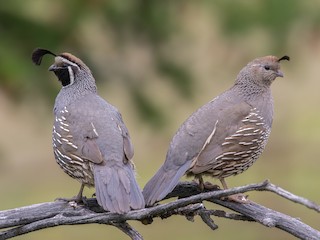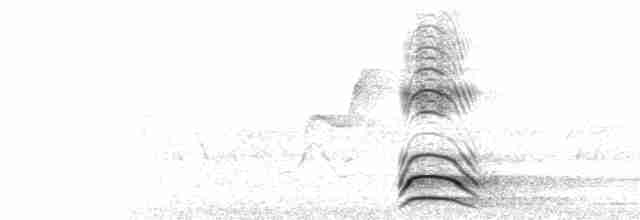California Quail Callipepla californica Scientific name definitions
- LC Least Concern
- Names (41)
- Subspecies (8)
Text last updated April 25, 2014
Sign in to see your badges
Species names in all available languages
| Language | Common name |
|---|---|
| Afrikaans | Pluimkwartel |
| Azerbaijani | Kaliforniya bildirçini |
| Basque | Galeper kaliforniarra |
| Bulgarian | Калифорнийски пъдпъдък |
| Catalan | colí de Califòrnia |
| Croatian | kalifornijska prepelica |
| Czech | křepel kalifornský |
| Danish | Californisk Topvagtel |
| Dutch | Californische kuifkwartel |
| English | California Quail |
| English (AVI) | California Quail |
| English (United States) | California Quail |
| Estonian | kalifornia tuttvutt |
| Finnish | kaliforniantupsuviiriäinen |
| French | Colin de Californie |
| German | Schopfwachtel |
| Greek | Καλιφορνέζικο Ορτύκι |
| Hebrew | שליו קליפורני |
| Icelandic | Skúfhæna |
| Italian | Colino della California |
| Japanese | カンムリウズラ |
| Latvian | Kalifornijas paipala |
| Lithuanian | Kaliforninė putpelė |
| Maori | Tikaokao | California Quail |
| Norwegian | kaliforniavaktel |
| Polish | przepiór kalifornijski |
| Portuguese (Portugal) | Codorniz-da-califórnia |
| Romanian | Prepeliță californiană |
| Russian | Калифорнийский перепел |
| Serbian | Kalifornijska prepelica |
| Slovak | prepelka korunkatá |
| Slovenian | Kalifornijska čopasta prepelica |
| Spanish | Colín de California |
| Spanish (Argentina) | Codorniz de California |
| Spanish (Chile) | Codorniz |
| Spanish (Mexico) | Codorniz Californiana |
| Spanish (Peru) | Codorniz de California |
| Spanish (Spain) | Colín de California |
| Swedish | kalifornientofsvaktel |
| Turkish | Kaliforniya Kolini |
| Ukrainian | Перепелиця каліфорнійська |
Callipepla californica (Shaw, 1798)
Definitions
- CALLIPEPLA
- californiana / californianus / californica
The Key to Scientific Names
Legend Overview
Full content is available exclusively to Birds of the World subscribers. Sign in Learn more
Introduction
The state bird of California, the California Quail, with its black teardrop crest and highly social behavior, is an iconic member of the New World Quail family. The indigenous range of this species includes the west coast of North America from British Columbia through Baja California Mexico. Best suited to patchy habitat with access to cover and annual plants such as legumes, the California Quail shows remarkable adaptability to novel habitats; introduced populations of this species are now established in locations across the globe from New Zealand to the slopes of Kilauea, Hawai'i to the Monte Desert of Argentina.
A. Starker Leopold's classic 1977 book, The California Quail, incorporated the wealth of natural history and management data gathered by wildlife researchers from 1900 through the mid 1970s. While wildlife ecologists continue to focus on developing applied projects aimed at understanding California Quail population dynamics, researchers have also become particularly interested in its evolution and behavior because of the evidence of dynamism in its mating, social, and foraging behavior.
Like other New World Quail, the California Quail, spends much of the year in social groups, or coveys, that occupy relatively stable home ranges. As the breeding season commences, the coveys dissolve and individuals adopt a variety of mating strategies from social monogamy to sequential polygamy to simultaneous polyandry; these associations are mirrored in the genetic composition of fledglings. Once the young hatch, birds associate in a variety of family groups from single females (and occasionally males) with precocial young through large amalgamated broods of multiple adults with associated young. While birds tend to mate within coveys, the direct relationship between individual interactions within the nonbreeding covey and the patterns of breeding associations remains to be elucidated.
Although not as adapted to desert environments as its congener, Gambel's Quail, the California Quail is still tolerant of high temperatures and, in regions of overlap with Gambel's Quail, individual California Quail readily hybridize with their desert cousin.
Variation in parenting and family associations, as well as productivity itself, appear related to a variety of ecological, demographic and environmental factors; in particular, preliminary research indicates that rainfall and habitat disturbance and, possibly, the concentration of chemicals such as phytoestrogens found in food plants, affect breeding behavior.
The California Quail is not currently considered threatened in any part of its range; however, it is susceptible to urbanization, and populations tend towards extinction in urban habitat fragments. Historically, its precipitous decline during periods of unregulated hunting and trapping, as well as during the transition to intensive agricultural practices in California during the 1800s, suggests that this species is not immune to human forces. Ultimately, the need to remain vigilant in managing this charismatic species, and the promise that continued study can help unlock heretofore-unidentified patterns of evolutionary dynamics, suggests that research to explore all aspects of its biology remains a worthy goal.

- Year-round
- Migration
- Breeding
- Non-Breeding
This species has been successfully introduced to the Hawaiian Is., New Zealand, Australia, Germany, Corsica, Argentina, and Chile. See text for details.




















































